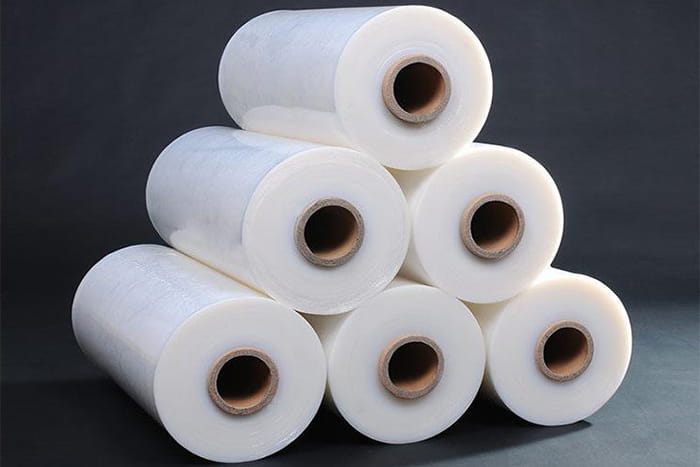
Today the laminating adhesives market for flexible food packaging is dominated by solvent-borne and by reactive solventless polyurethane systems. Reactive solventless adhesives have become very popular to substitute solvent-borne adhesives, because of cost advantages and because of the fact that emissions of organic solvents are avoided. However, there are two limitations of the solventless adhesive technology: Especially laminates having been produced with solventless adhesives for high-end packaging applications have to be stored for several days before being applied for food packaging. These storage times are necessary in order to build up bonding strength for subsequent cut and sealing processes and in order to eliminate low molecular weight ingredients with a toxicological risk potential for the food that is packed. Another disadvantage of solventless adhesives can be that the visual appearance of prints and the transparency of non-printed clear laminates may be significantly worse than that of laminates being produced with solvent-borne adhesives.
Considering the limitations of current solventborne and solventless laminating adhesives the question comes up: Can water-based adhesives be an attractive alternative?
The peel strength of a laminate bonding depends to a large extent on the molecular weight of the adhesive. To create a significant bond strength polymeric adhesives should have at least a medium molecular weight of several 10000 Dalton. A challenge for two component polyurethane adhesives being used today is that the build-up of molecular weight in the adhesive between the films requires a certain period of time.
Before the reactive adhesive has reached a sufficient molecular weight, the laminate shows only a very limited resistance to mechanical stress. When using solventless adhesives, which typically start from very low molecular weight components (figure 1), there is a risk that immediately after the second web is laminated, the films move against each other due to a not yet assembled bonding strength. In this case a rapid processing of freshly prepared laminate rolls is difficult. Rewinding and slitting is only possible after several hours of storing the laminate rolls, and the risk of telescoping of the rolls is omnipresent. Heat seal operations can be performed usually only after several days, because the high mechanical stress to the laminate during the sealing process requires a sufficient strong bonding strength of the laminating adhesive.
In addition to the limited green strength users of reactive polyurethane adhesives are confronted with another problem, and that is the risk of contaminating the food being packed with toxic components. Usually solvent-borne and especially solventless adhesives contain some per cent of monomeric aromatic isocyanates, for example diphenylmethane diisocyanate (MDI). This chemical is used as a component of the adhesives due to its high chemical reactivity to enables a rapid build-up of molecular weight and thereof the bonding strength. If there is some unreacted aromatic isocyanate being left in the adhesive, there is a danger that this isocyanate migrates through the inner laminate film into the packaged food and hydrolyses there to form an aromatic amine.
Such aromatic amines are suspected of causing cancer and must not be detected in the food. As a consequence of this danger there have to be several days between laminate production and filling of the flexible packaging with food. This storage time ensures that the aromatic isocyanate in the adhesive layer has completely been converted to a non-toxic product, by being incorporated into the polymer network of the adhesive. In recent years for solventless adhesives this waiting time could be significantly reduced by chemical innovations, however, even today it is generally at least some days of storage time. For high performance-applications, e.g. retortable packaging, necessary storage times can reach up to 2 weeks in heated chambers.
A series of water-based lamination adhesives have been developed successfully for flexible packaging applications. As demonstrated in this paper, the water-based adhesives offer excellent food safety and adhesive green strength, which in turn make the in-line processing possible to shorten the overall converting process time. In addition an excellent film clarity and print brilliance can be achieved. With these advantages, water-based adhesive is a very attractive choice of lamination adhesives for the growing flexible packaging industry.
Regional Sales Manager
Zhejiang Ruico Advanced Materials Co., Ltd. (Stock No.873233)
Add: No.188, Liangshan Road, Linghu Town, Nanxun District, Huzhou City, Zhejiang Province, China 313018
Phone: +86 (572) 2903236
Fax: +86 (572) 2905222
WhatsApp: +86 15968208672
Cellphone: +86 15968208672
Website:www.ruicoglobal.com
E-mail: [email protected]
